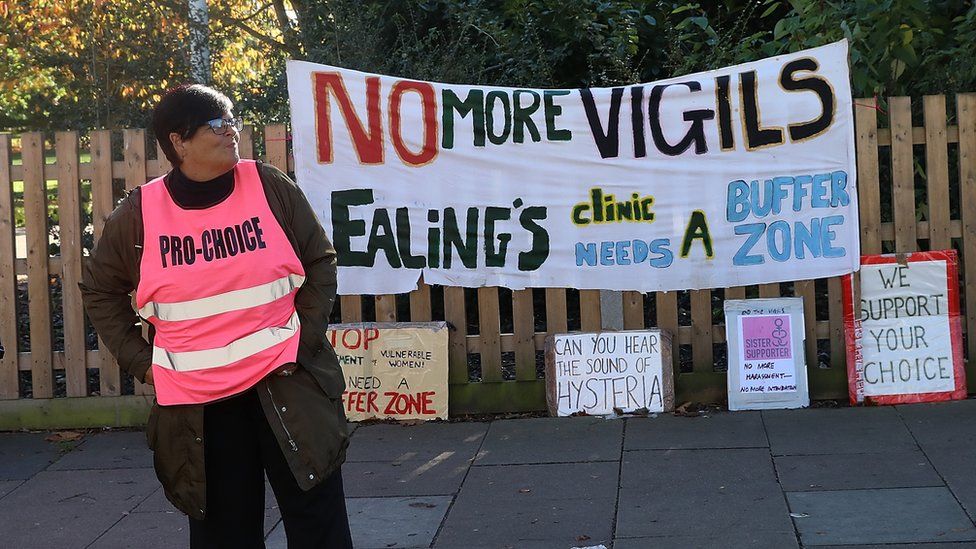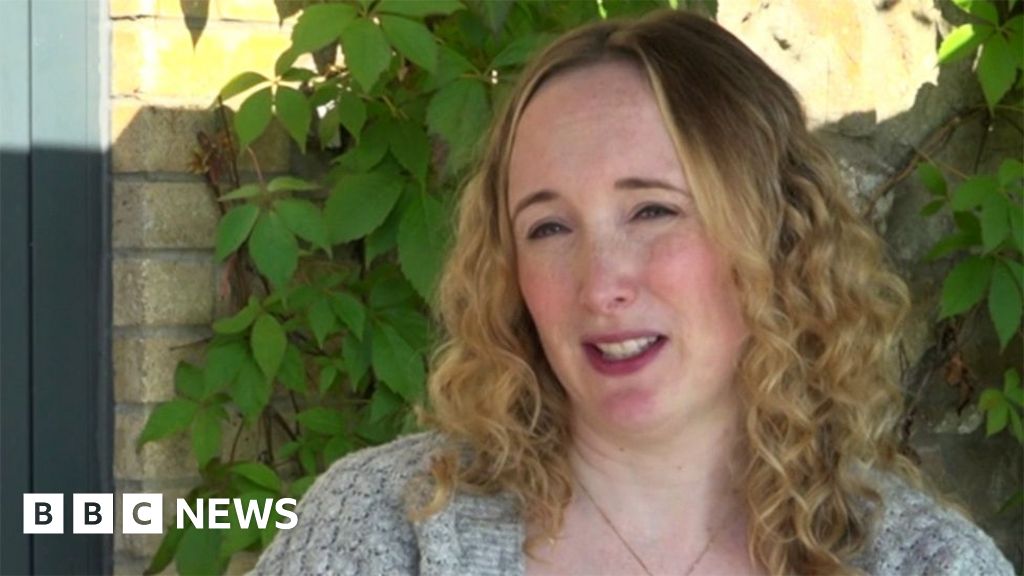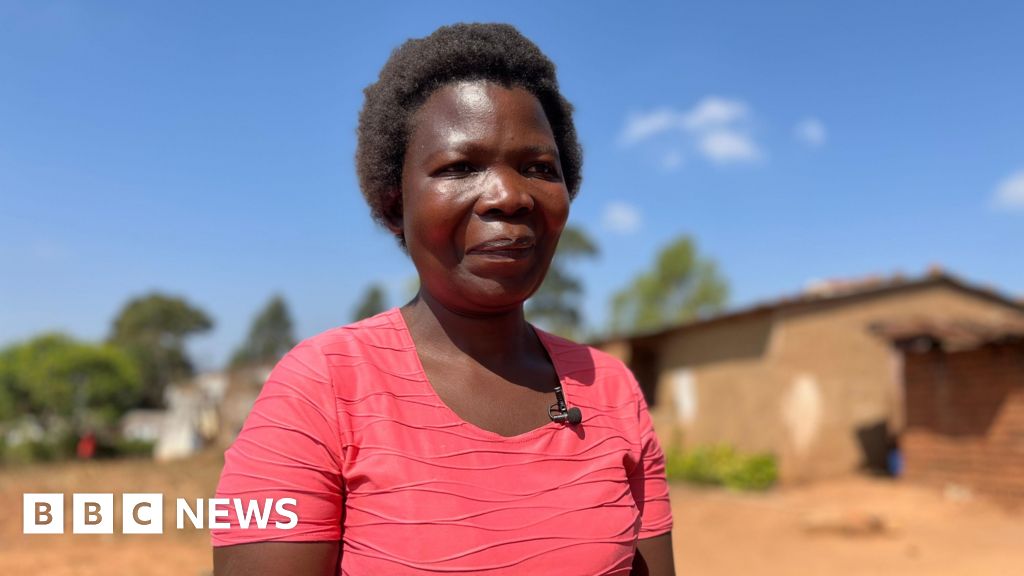 Image source, Getty Images
Image source, Getty Images
By Becky Morton
Political reporter
Ministers have been accused of kicking plans for protest buffer zones around abortion clinics "into the long grass", after it was announced they would not be implemented until next spring.
A law to introduce buffer zones in England and Wales was passed in May.
But the government said it was launching a consultation on guidance before buffer zones could be enforced.
The British Pregnancy Advisory Service (BPAS) said it was "disappointed but not surprised" by the delay.
The charity is the leading provider of abortion advice and treatment in the UK, with more than 55 reproductive healthcare clinics across the country.
Rachael Clarke, chief of staff at BPAS, told the BBC: "It seems like all they are doing is once again kicking it into the long grass. And in the meantime women are going to continue to suffer."
Buffer zones would prevent demonstrations within 150 metres of an abortion clinic.
Ms Clarke said that since the law was passed more than six months ago, protests had continued "unabated", with at least 16 clinics targeted.
BPAS said examples included a man protesting in a waiting room and refusing to leave and individuals standing outside a clinic with graphic signs showing foetuses.
Ms Clarke argued there was no need for guidance or a consultation as the law was closely worded with similar measures already implemented in Northern Ireland, which the Supreme Court ruled did not "disproportionately interfere" with protesters' rights.
She added that she was concerned guidance could weaken protections for women, for example by allowing "peaceful prayer" outside clinics, which she said caused "the vast majority of distress, alarm and harassment".
On Monday, Home Office minister Lord Sharpe told peers: "The government will issue non-statutory guidance to ensure law enforcement agencies have a clear, consistent understanding around enforcement, and abortion service providers and protesters are clear as to what is expected under the new law."
He said a consultation on the guidance would be launched "imminently" to ensure the legislation could be implemented effectively from spring next year.
Lord Sharpe added: "This is new legislation on an emotive topic and there are strong views on all sides of the debate, and determining the appropriate balance will not always be straightforward."
However, Labour MP Stella Creasy, who first proposed the measures to introduce buffer zones, said launching a consultation was "a stalling tactic".
"A woman's right to access an abortion in peace without being harassed should be straightforward - Parliament voted for it," she said. "And yet we can see the government putting up hurdles."
She said buffer zones had already undergone scrutiny before the law was passed and guidance was available on Public Spaces Protection Orders, which allow councils to prohibit specified activities within a defined area.
Some councils have already used such orders to introduce local buffer zones around abortion clinics. But campaigners says this can take a significant amount of time and money to introduce and have called for a nation-wide solution.
Chief executive Andrea Williams said: "Buffer zones set a dangerous precedent and are being weaponised to silence debate and prevent women accessing any alternatives to abortion."
Under section 9 of the Public Order Act, which was passed in May, harassing, obstructing or interfering with anyone attending an abortion clinic, within a 150 metre "safe access zone", was made a criminal offence carrying an unlimited fine.
The measure had cross-party support, although it was opposed by some senior politicians including Minister for Women and Equalities Kemi Badenoch and then-Home Secretary Suella Braverman.
A similar bill has also been published in Scotland but it has not yet become law.
 (1).png)
 10 months ago
11
10 months ago
11













